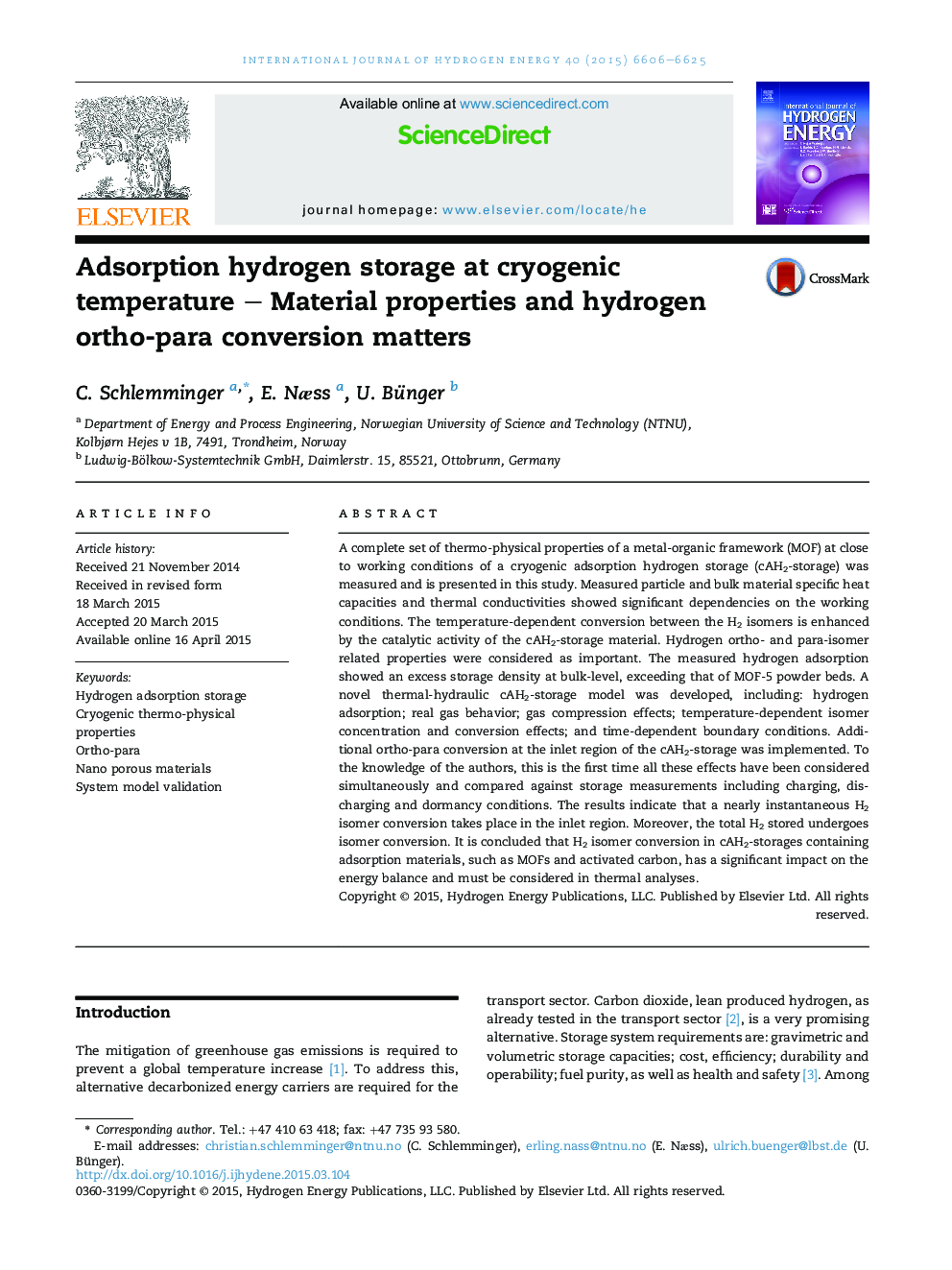| Article ID | Journal | Published Year | Pages | File Type |
|---|---|---|---|---|
| 1271457 | International Journal of Hydrogen Energy | 2015 | 20 Pages |
•Determination methods for complete set of storage material properties is presented.•Storage bed properties show significant dependency of storage working conditions.•New storage model including H2 as ortho-para isomers was successfully validated.•H2 ortho-para isomer conversion is most significant in tank inlet region.•Exact properties and isomer effects are essential for successful storage modeling.
A complete set of thermo-physical properties of a metal-organic framework (MOF) at close to working conditions of a cryogenic adsorption hydrogen storage (cAH2-storage) was measured and is presented in this study. Measured particle and bulk material specific heat capacities and thermal conductivities showed significant dependencies on the working conditions. The temperature-dependent conversion between the H2 isomers is enhanced by the catalytic activity of the cAH2-storage material. Hydrogen ortho- and para-isomer related properties were considered as important. The measured hydrogen adsorption showed an excess storage density at bulk-level, exceeding that of MOF-5 powder beds. A novel thermal-hydraulic cAH2-storage model was developed, including: hydrogen adsorption; real gas behavior; gas compression effects; temperature-dependent isomer concentration and conversion effects; and time-dependent boundary conditions. Additional ortho-para conversion at the inlet region of the cAH2-storage was implemented. To the knowledge of the authors, this is the first time all these effects have been considered simultaneously and compared against storage measurements including charging, discharging and dormancy conditions. The results indicate that a nearly instantaneous H2 isomer conversion takes place in the inlet region. Moreover, the total H2 stored undergoes isomer conversion. It is concluded that H2 isomer conversion in cAH2-storages containing adsorption materials, such as MOFs and activated carbon, has a significant impact on the energy balance and must be considered in thermal analyses.
